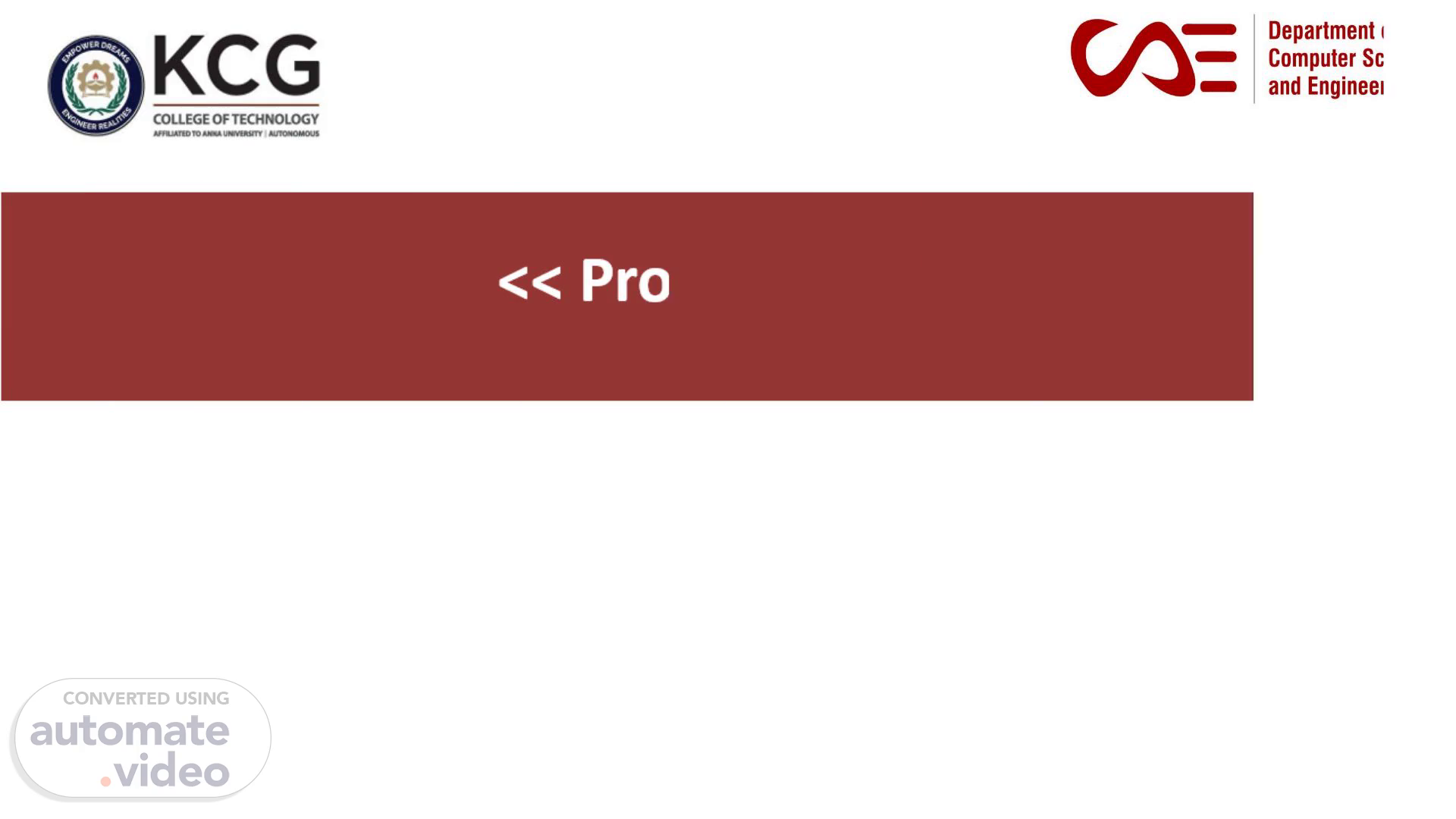Page 1 (0s)
<< Project Title>>. Supervisor <Name of the Supervisor Designation>.
Page 2 (13s)
2. Objective. Goal of the project to be clearly described in a single statement..
Page 3 (26s)
3. Motivation. Motivation behind the project. Use relevant statistical reports or pictures..
Page 4 (54s)
4. Introduction to the Domain. Introduction to the domain.
Page 5 (1m 8s)
5. Project Description. Salient features and techniques involved in the project to be introduced with relevant information..
Page 6 (1m 33s)
6. Base Paper. <Name of the author(s)> <Year of Publication>, “<Title of the Paper>”, <Publication Details> Example: D. Schwarz, H. Kloeden, and R. Rasshofer (2016), “Ko-TAG—Cooperative senso technology for traffic safety applications,” in Proc. Int. Workshop Intelligent Transportation, vol 2. no. 5, pp 245-250..
Page 7 (2m 10s)
7. Supporting Paper 1. Contribution Methodology Outcome Challenges Future Scope.
Page 8 (2m 30s)
8. Supporting Paper 2. Contribution Methodology Outcome Challenges Future Scope.
Page 9 (2m 37s)
9. Inference of Literature Review. Base Paper To design a device such that it will reduce the incidents of accidents on roads and various premises, with subsequent reduction in loss of life and property Supporting Paper 1 To assess the driving safety indicator through making scores on driver background and driving habits synthetically. System architecture is explained in detail for the analysis process and three algorithms. Supporting Paper 2 To assess the driving behavior through dashboard data and analyze the behavior and send human readable vehicular information to the mobile phone. <Any other reference>.
Page 10 (3m 4s)
10. Extraction from the Literature Survey for the proposed system.
Page 11 (3m 37s)
11. Problem Definition. Description of problem identified..
Page 12 (4m 0s)
12. Proposed Solution. Proposed solution / innovation with the technology to be used..
Page 13 (4m 28s)
13. Proposed Solution - Justification. <Justify the need of the technology/algorithm to be used in the proposed system>.
Page 14 (4m 38s)
14. Requirement Specification. FRONT END TOOLS BACK END TOOLS MARKUP LANGUAGES SCRIPTING LANGUAGES MIDDLE WARE TECHNOLOGIES IDE SIMULATION TOOLS NETWORK/WIRELESS TECHNOLOGIES ANY OTHER.
Page 15 (4m 57s)
15. Requirement Specification - Justification. <Justify the need of the Software/Hardware components> Comparison table may be presented.
Page 16 (5m 6s)
16. Architecture Diagram. Overall architecture diagram of the project Appropriate UML diagrams shall also be used to give pictorial representation about the overall components of the project.
Page 17 (5m 17s)
17. Module Description. List and describe individual modules in different slides. Describe the functionality (User perspective) of each module. Describe the development strategy individual modules as developer perspective For each and every module, the input, the functional process (algorithm/strategy) and the output to be fed as input next module (interaction) should be explained diagrammatically using functional block diagram..
Page 18 (5m 36s)
18. Database Design. Database schema for database oriented projects.
Page 19 (5m 44s)
19. Algorithm Explanation. Explain the algorithm used – steps/psudocode/flowchart, in different slides.
Page 20 (5m 53s)
20. Implementation. Explain the program logic (part of coding) used, in different slides.
Page 21 (6m 2s)
21. Screenshots. Present the screen shots of work progress/deliverables of modules.
Page 22 (6m 10s)
22. Conclusion and Future Scope. Conclude the work done Present the avenues for further development.
Page 23 (6m 19s)
23. Details of Technical Paper Presentation / Publication.
Page 24 (6m 32s)
24. References. 1. <Name of the author(s)> <Year of Publication>, “<Title of the Paper>”, <Publication Details> Example: Ivan Lequerica, Pedro M. Ruiz and Victor Cabrera (2010), “Improvement of Vehicular Communications by Using 3G Capabilities to Disseminate Control Information”, IEEE Network., vol. 24, no. 1, pp 32-38. Schwarz D, Kloeden H, and Rasshofer R (2016), “Ko-TAG—Cooperative sensor technology for traffic safety applications,” in Proc. Int. Workshop Intelligent Transportation, pp 245-250..
Page 25 (7m 11s)
THANK YOU.
